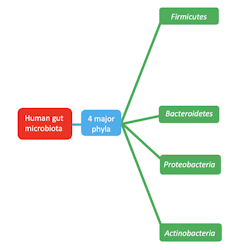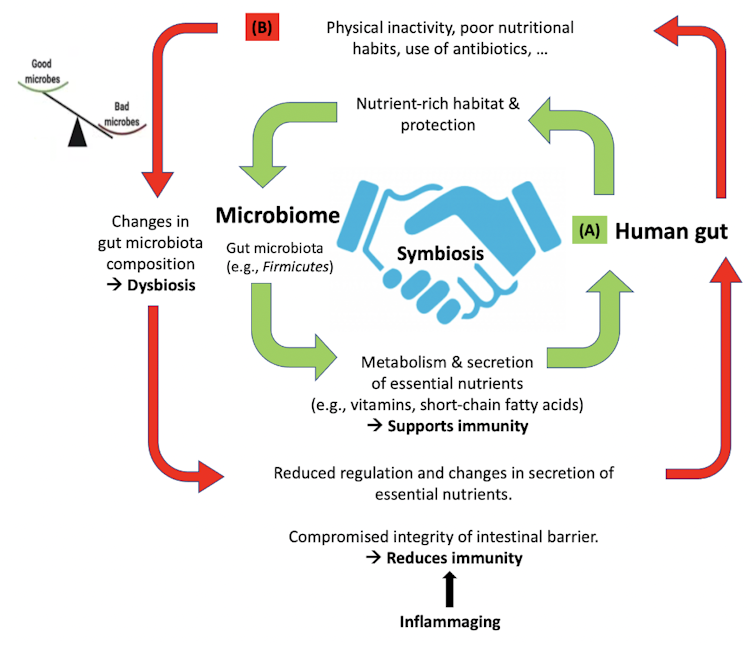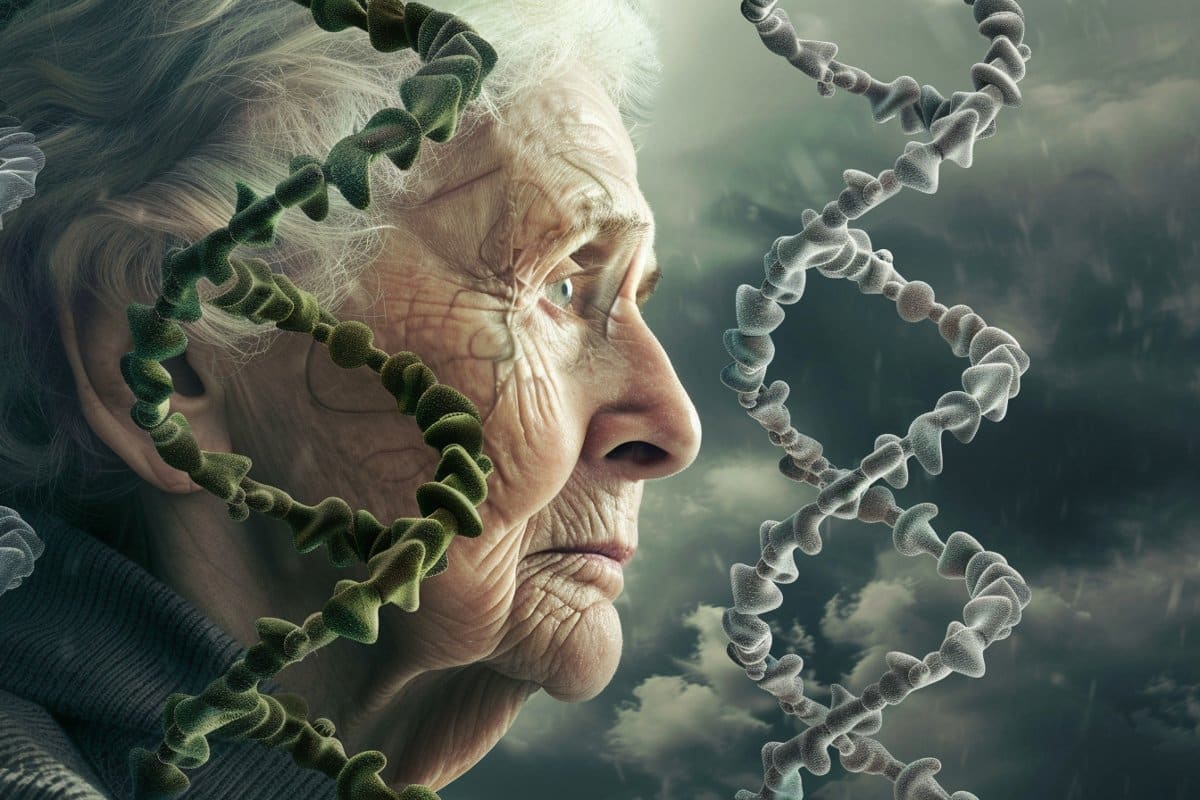The human immune system changes with age. Immune responses start to become less robust as people get older, which makes them more vulnerable to certain infections and diseases. However, immune system aging looks different from person to person. Research has shown that changes to the composition and diversity of the microorganisms in the gut may explain these differences in immune system aging.
The gut microbiome — the population of microorganisms that lives in the gastrointestinal tract — helps the body maintain a stable internal environment when it is faced with external changes. This is known as homeostasis. The gut microbiome supports homeostasis in different ways, such as through helping to keep the immune system alert, and digesting dietary fibre into short-chain fatty acids to strengthen the intestinal wall.
The gut microbiome also helps us to regulate our inflammatory reactions. Inflammation helps the body fight microorganisms that cause disease, and helps repair damaged tissues. However, as the composition of our gut microbiome changes with age, a low level of inflammation can become constant throughout the body. This is called inflammaging.
When inflammaging develops in the gut, it leads to a decrease in immune responses, which puts people at a higher risk for infection and disease.
Let’s take a closer look at the gut microbiome and how it changes with age.
Gut microbiome imbalances in older adults

Our gastrointestinal tract can be compared to a densely populated city inhabited by a variety of different bacteria, fungi, archaea and viruses collectively called the gut microbiota. In fact, compared to other parts of the body, the gut microbiome has the largest number of bacteria. In a healthy gut microbiome, there are four dominant families (or phyla) of microorganisms, including Firmicutes, Bacteroidetes, Proteobacteria and Actinobacteria.
Firmicutes and Bacteroidetes make up around 80 to 90 per cent of the gut microbiota in the digestive tract. Firmicutes help with the production of short-chain fatty acids to support intestinal health and the secretion of mucus to improve intestinal wall defence. Bacteroidetes metabolize complex carbohydrates into vitamins and nutrients, and help promote glycogen storage to improve glucose metabolism.
The gut microbiome and immune system work closely together. The microorganisms in the gut send out signals that are detected by immune sensors. This allows the immune system to regulate the beneficial bacteria in the gut, helping maintain immune homeostasis. Through this interaction, the adaptive immune system also receives stimuli from harmful substances called antigens, which trigger an immune reaction.
However, as people age, the composition and balance of microorganisms in the gut changes. This gives rise to microbial dysbiosis, which means there is a reduction in the number of beneficial bacteria in the gut, alongside a higher number and pro-inflammatory organisms and bacteria that can cause disease. In addition to this, research has also shown that the general diversity of bacteria in our gut also decreases with age.
Over time, the shortage of beneficial bacteria such as Firmicutes in older adults starts to compromise the integrity of their intestinal barrier, causing it to become leaky. This is because the Firmicutes family plays a very important role in keeping the intestinal wall healthy and strong by producing a short-chain fatty acid called butyrate. Short-chain fatty acids such as butyrate help provide nutrients to strengthen the intestinal wall, inform immune responses and lower inflammation.
When intact, the intestinal barrier works to prevent harmful bacteria from passing through the intestinal wall, entering the circulatory system and reaching important organs. However, when there are not enough gut bacteria to produce the short-chain fatty acids that are needed for the intestinal wall to function, bacteria are able to enter the bloodstream. This contributes to the formation of intestinal inflammaging, which refers to a low level of inflammation that becomes steady throughout the body with age.
How inflammaging works
Inflammaging creates an environment that is prone to inflammation, which is caused and maintained by several factors. These can include microorganism imbalances in the intestines (microbial dysbiosis), psychological stress, physical inactivity, poor nutrition and chronic infections.
When the body is exposed to these factors on a regular basis, cellular senescence occurs. Cellular senescence is a state in which cell growth is permanently arrested, which means that cells are no longer able to self-renew. Eventually, this leads to a decrease in immune responses, which are important to prevent foreign substances and pathogens from entering the body.

Maintaining a healthy balance of gut microbiota
There is a common saying that claims “you are what you eat.” Indeed, nutrition and diet play an important role in regulating the number of different microorganisms that live in the gut. This means that diet may also play a key role in the immune function of older adults.
The Mediterranean diet, known for its lower intake of refined carbohydrates, saturated fats, dairy products and red meat, has been shown to have a positive effect on the balance of microorganisms in the gut and the strength of the intestinal barrier. The Mediterranean diet has also been linked to a lower risk of Type 2 diabetes in older adults, allowing these individuals to live a longer and healthier life.
The use of probiotics and prebiotics can also help fight age-related inflammation. Probiotics, such as Lactobacilli and Bifidobacteria, are live microorganisms that can be consumed to support overall health. More specifically, probiotics help improve the function of the intestinal barrier and regulate immune responses by modifying the composition of the gut microbiome. However, there is still some debate around whether the acidic conditions in the stomach allow probiotics to survive long enough to be able to move into the intestine.
It is clear that the immune system has an intricate relationship with the gut microbiome. A healthy and well-balanced gut microbiome will strengthen the intestinal barrier, which helps to reduce inflammation throughout the body and support the immune system.
To achieve this, it is important to maintain a healthy and well-balanced lifestyle as we grow older. This can include lower intake of dairy products and red meats, and harnessing the benefits of probiotics and prebiotics.







